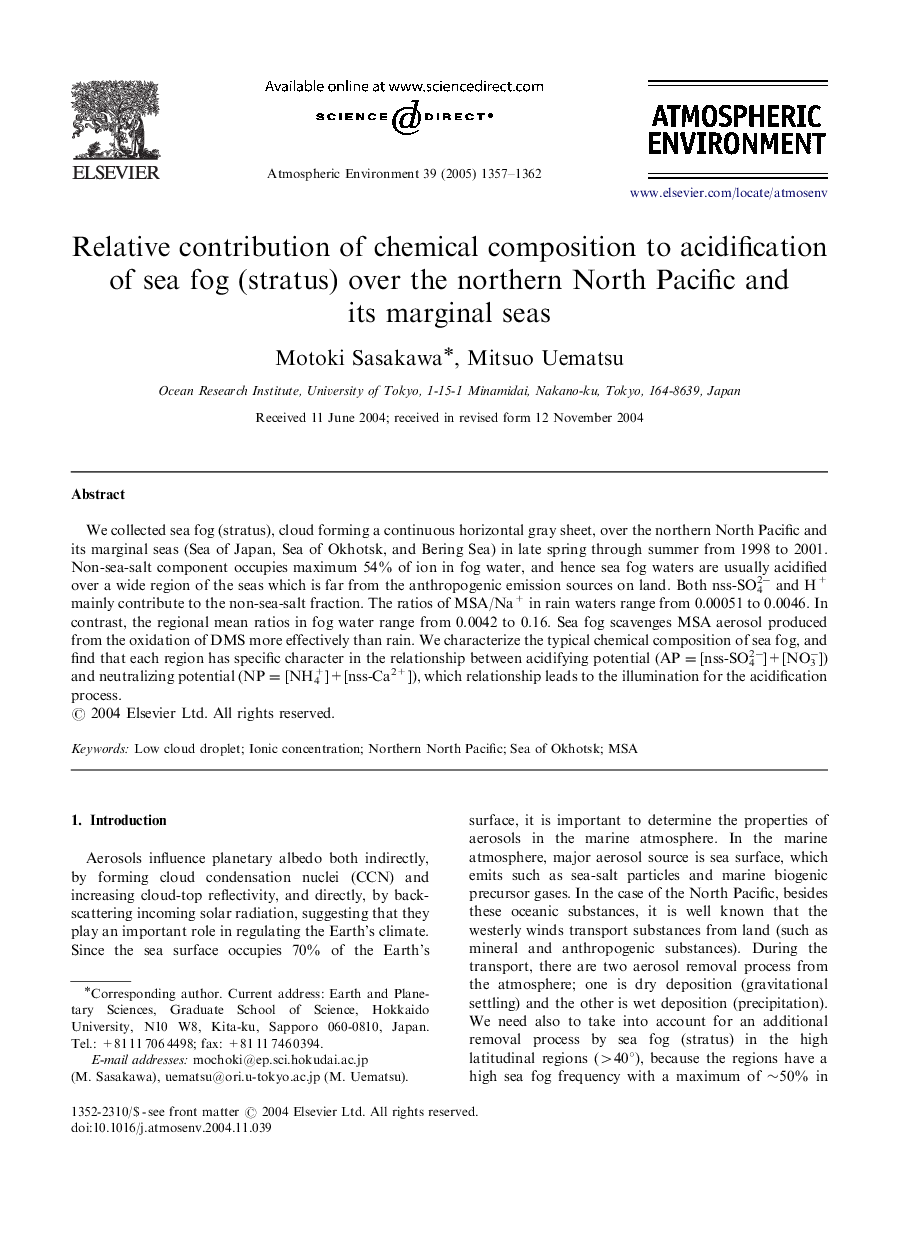| Article ID | Journal | Published Year | Pages | File Type |
|---|---|---|---|---|
| 9458851 | Atmospheric Environment | 2005 | 6 Pages |
Abstract
We collected sea fog (stratus), cloud forming a continuous horizontal gray sheet, over the northern North Pacific and its marginal seas (Sea of Japan, Sea of Okhotsk, and Bering Sea) in late spring through summer from 1998 to 2001. Non-sea-salt component occupies maximum 54% of ion in fog water, and hence sea fog waters are usually acidified over a wide region of the seas which is far from the anthropogenic emission sources on land. Both nss-SO42â and H+ mainly contribute to the non-sea-salt fraction. The ratios of MSA/Na+ in rain waters range from 0.00051 to 0.0046. In contrast, the regional mean ratios in fog water range from 0.0042 to 0.16. Sea fog scavenges MSA aerosol produced from the oxidation of DMS more effectively than rain. We characterize the typical chemical composition of sea fog, and find that each region has specific character in the relationship between acidifying potential (AP=[nss-SO42â]+[NO3â]) and neutralizing potential (NP=[NH4+]+[nss-Ca2+]), which relationship leads to the illumination for the acidification process.
Keywords
Related Topics
Physical Sciences and Engineering
Earth and Planetary Sciences
Atmospheric Science
Authors
Motoki Sasakawa, Mitsuo Uematsu,
